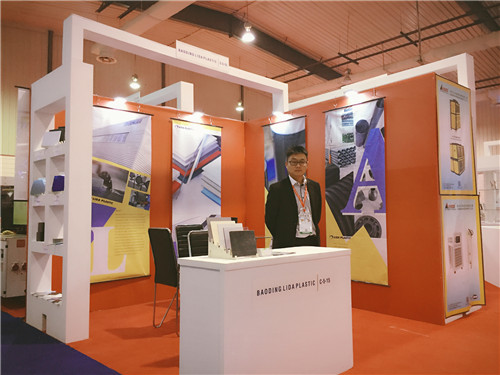Sep . 25, 2024 16:59 Back to list
pe pipe fittings
Understanding PE Pipe Fittings A Comprehensive Guide
Polyethylene (PE) pipe fittings have emerged as a vital component in various plumbing and construction applications due to their remarkable properties and advantages. These fittings, engineered from high-density polyethylene (HDPE) or low-density polyethylene (LDPE), offer excellent durability, flexibility, and resistance to corrosion, making them suitable for diverse environments.
What are PE Pipe Fittings?
PE pipe fittings are connectors and junctions used to join sections of PE pipes in different configurations. They facilitate the routing of fluids in plumbing systems, irrigation networks, and industrial installations. Common types of PE fittings include elbows, tees, couplings, adaptors, and valves, each designed to meet specific functional requirements.
Advantages of PE Pipe Fittings
1. Corrosion Resistance Unlike traditional metal fittings, PE pipe fittings resist corrosion from chemicals and environmental factors. This property is particularly beneficial when working with aggressive substances and in areas with high humidity.
2. Lightweight and Flexible PE fittings are significantly lighter than metal alternatives, reducing transportation costs and installation challenges. Their flexibility allows for easy manipulation during installation, accommodating a variety of configurations and layouts.
3. Low Thermal Conductivity PE has low thermal conductivity, which minimizes heat loss in hot water applications and prevents condensation in cold water systems. This feature contributes to energy savings and enhances overall system efficiency.
4. Joint Integrity PE pipe fittings can be joined using various methods, such as heat fusion, electrofusion, and mechanical joining. These techniques create strong, leak-proof connections that enhance the longevity of the plumbing system.
5. Cost-Effectiveness The longevity and durability of PE fittings reduce long-term maintenance costs. Their installation flexibility also leads to labor savings during construction or repair.
6. Environmental Friendliness Polyethylene is recyclable and produced with less energy compared to metal fittings. The extended lifespan of PE components further contributes to sustainability in construction practices.
Common Applications
PE pipe fittings find applications across diverse industries
- Water Supply Systems Ideal for municipal water supply, irrigation, and wastewater management, PE fittings help maintain the integrity of the piping system. - Agriculture In agricultural settings, PE fittings enable efficient irrigation systems, ensuring optimal water supply for crops while minimizing waste.
pe pipe fittings

- Gas Distribution PE materials are extensively used for natural gas distribution due to their resistance to various chemicals and the ability to handle different pressures.
- Industrial Applications Manufacturing, chemical processing, and food processing industries employ PE fittings for their versatility and durability
.Installation and Maintenance
Installing PE pipe fittings requires careful planning and execution to ensure optimal performance. Key considerations include
- Correct Sizing Ensure that the fittings match the pipe diameter to prevent leaks or structural failures.
- Proper Joining Methods The method of joining (e.g., heat fusion, electrofusion) must be chosen based on the application, available equipment, and specific site conditions.
- Avoiding Sharp Bends Gradual curves are recommended to minimize stress on the joints and extend the lifespan of the system.
Routine maintenance involves inspecting fittings for signs of wear or damage, ensuring that joints remain secure, and ensuring that the system operates within its intended pressure range.
Challenges and Considerations
While PE pipe fittings offer many benefits, there are challenges to consider
- Exposure to UV Light If not protected, long-term exposure to sunlight can lead to degradation. Using UV-stabilized PE materials can mitigate this risk. - Temperature Limitations PE fittings may not perform well under extremely high temperatures. Operators must ensure that systems remain within the recommended temperature range.
Conclusion
PE pipe fittings are a cornerstone in modern plumbing and irrigation systems due to their diverse benefits, including durability, flexibility, and resistance to environmental factors. As industries continue to prioritize sustainability and efficiency, the role of PE fittings is expected to expand, solidifying their place as a preferred choice in various applications. Understanding their properties, applications, and best practices for installation can pave the way for successful project outcomes and long-lasting systems.
-
High-Quality PPR Pipes and Fittings Durable ERA PPR & PVC PPR Solutions
NewsJul.08,2025
-
Black HDPE Cutting Board - Durable, Non-Porous & Food Safe HDPE Plastic Cutting Board
NewsJul.08,2025
-
High-Quality CPVC Panel Durable HDPE & PVC Panels Supplier
NewsJul.08,2025
-
Double PE Welding Rod Supplier - High Strength, Durable & Versatile Welding Solutions
NewsJul.07,2025
-
High-Quality PVC-O Pipe Supplier Durable 75mm PVC Pipe & Connections Leading PVC Pipe Company
NewsJul.07,2025
-
HDPE Drainage Pipe Supplier – Durable & Corrosion-Resistant Solutions
NewsJul.06,2025

